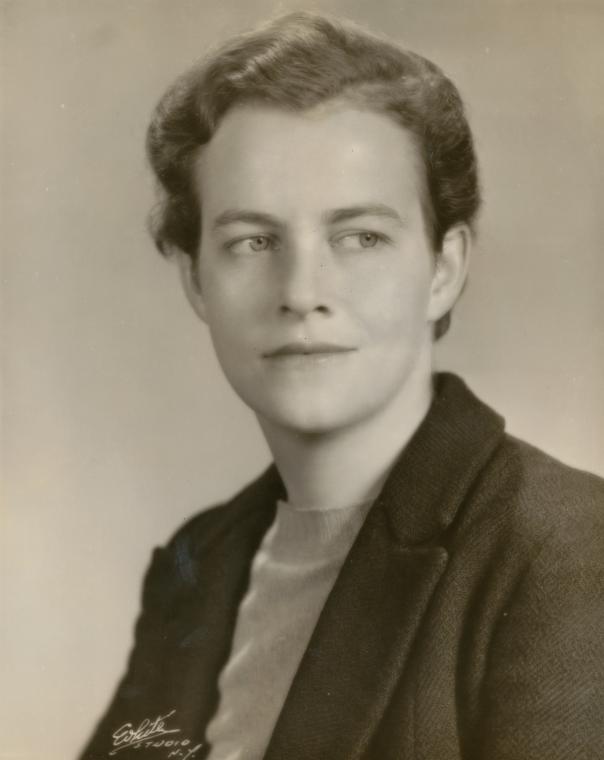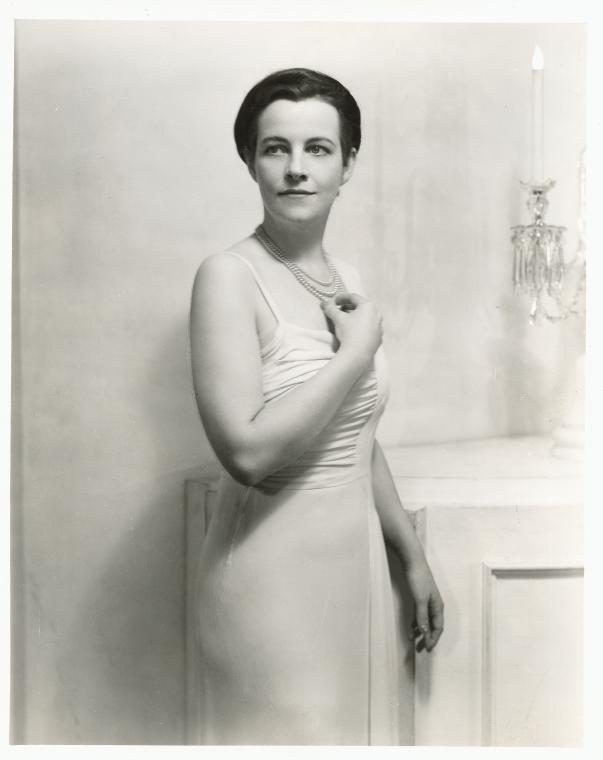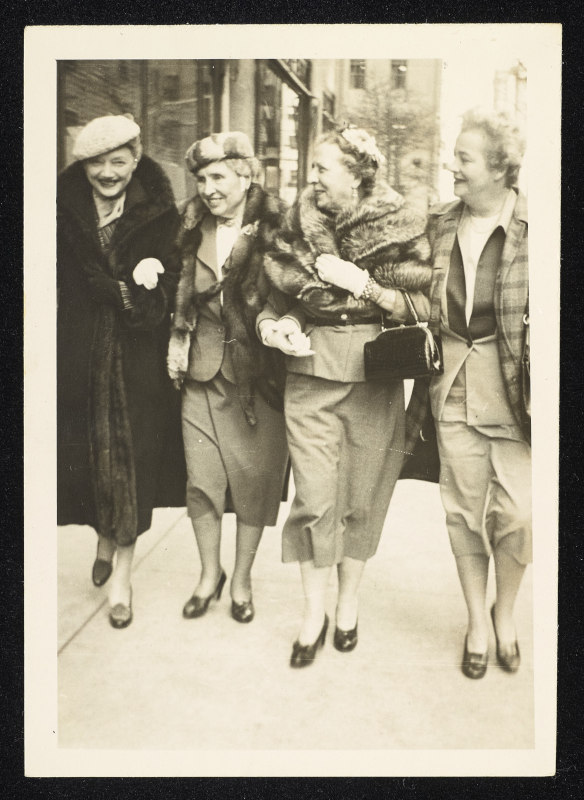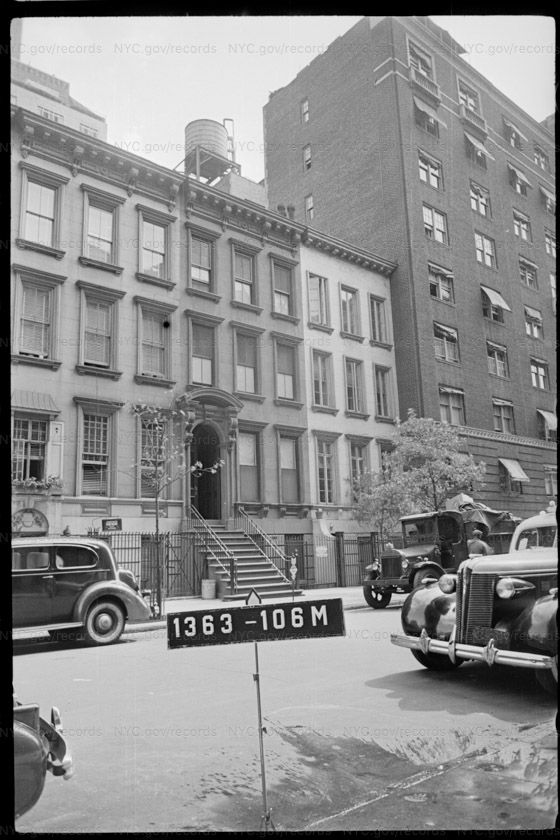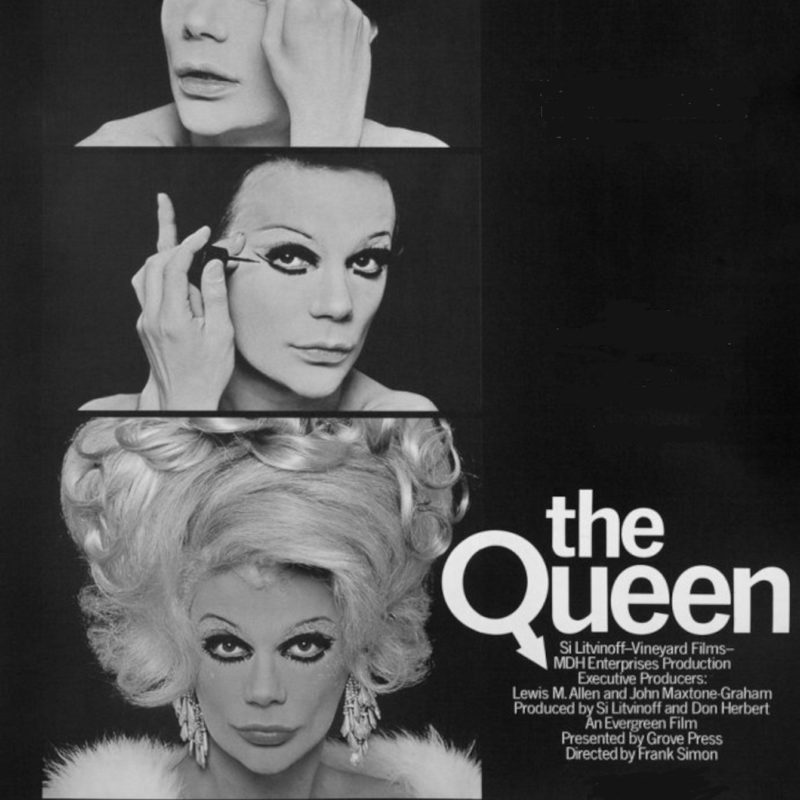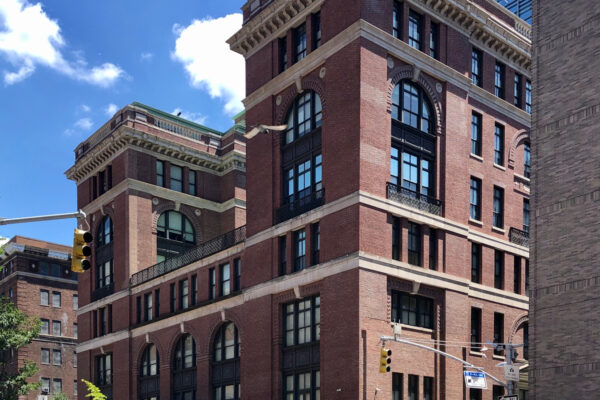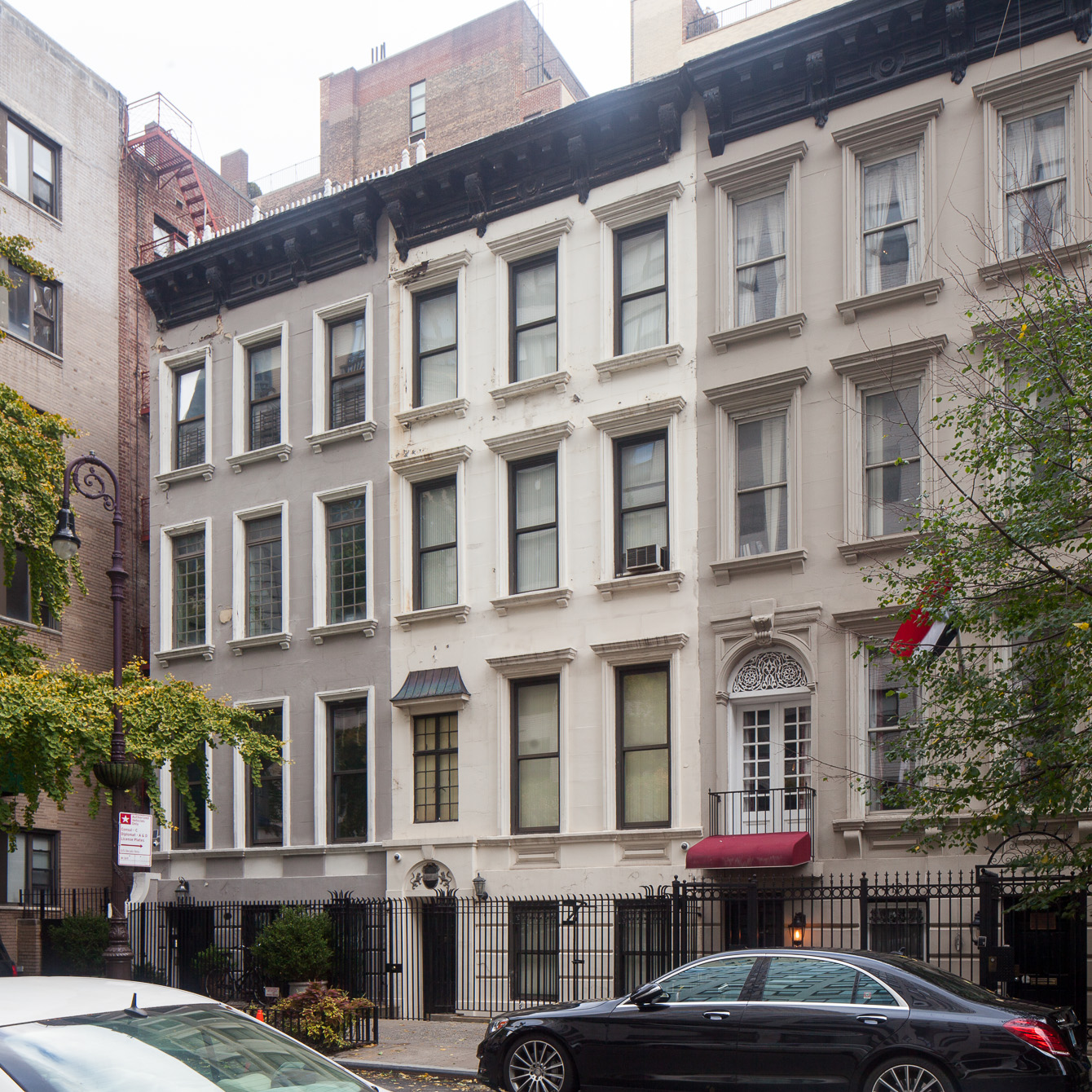
Nancy Hamilton Residence
overview
Lyricist, actress, and producer Nancy Hamilton lived in this building from 1932 until her death in 1985; her longtime companion, noted Broadway actress Katharine Cornell, lived with her for 13 of those years.
Hamilton is best remembered for co-writing the 1953 song “How High the Moon” and for producing the Academy Award-winning documentary Helen Keller in Her Story (1955).
On the Map
VIEW The Full MapHistory
Nancy Hamilton (1908-1985) was born in Sewickley, Pennsylvania, to an upper class family and attended Smith College. She became involved in drama and wrote and performed in several revues. Upon graduating, she moved to New York in 1932, took up residence at 411 East 51st Street, and worked as a lyricist, writer, and actress. Hamilton became known for her song lyrics and comedic performances and once described herself as, “a gay and chatty bachelor girl with a boyish haircut who has beer for breakfast.”
During the 1930s, Hamilton became the companion and lover of acclaimed Broadway actress Katharine Cornell. Known to her friends as “Kit,” Cornell was named “The First Lady of the Theater” by drama critic Alexander Woollcott. She married theater producer Guthrie McClintic in 1921, and the pair was known to have a “lavender marriage”: a heterosexual marriage of advantage, convenience, and companionship while either one or both members maintained outside same-sex relationships. Lavender marriages were relatively common during the heyday of Broadway (1940s-1950s) and the Golden Age of Hollywood (1910-1950) as a way to generate good press through a public presentation of wedded bliss.
Coincidentally, Hamilton lived around the corner from Cornell’s and McClintic’s residence at 23 Beekman Place. Hamilton and Cornell were introduced by Gertrude Macy, Cornell’s general manager, who was taken with Hamilton’s impersonation of Eleanor Roosevelt in her revue One For the Money and arranged a meeting between the two. Both were known to participate in New York’s “Sewing Circle,” a phrase attributed to Russian-American actress Alla Nazimova as a discreet name for a clique of lesbian and bisexual actresses who socialized within Golden Age Hollywood and Broadway.
During World War II, Hamilton worked as Cornell’s wardrobe mistress so she could accompany her on a United Service Organizations (USO) tour of The Barretts of Wimpole Street, in which Cornell starred as the Victorian poet Elizabeth Barrett Browning.
Cornell also narrated two documentary films produced by Hamilton. The first arose from the pair’s friendship with disability rights advocate and political activist Helen Keller. The film, titled Helen Keller in Her Story, won the 1955 Academy Award for Best Documentary. The second, This is Our Island (1971), is about Martha’s Vineyard, where Hamilton and Cornell maintained a residence.
When McClintic died in 1961, Hamilton and Cornell were able to live together full time until Cornell’s death in 1974. They alternated between Hamilton’s residence in New York and their shared house on Martha’s Vineyard. Hamilton notably refused interviews after she and Cornell were together. She likely wanted to safeguard the nature of their relationship or did so out of respect for Cornell’s privacy after her retirement from the stage in 1961.
Following Cornell’s death, Hamilton began a relationship with actress Katharine Hepburn, whom she had been formerly involved with during her early years in New York.
Hamilton died in 1985. She is most remembered for her documentary of Keller and her 1953 song “How High the Moon,” co-written with longtime collaborator Morgan “Buddy” Lewis, whose lyrics some theater scholars read as a veiled expression of her love for Cornell:
Somewhere there’s music
How near, how far
Somewhere there’s heaven
It’s where you are…
The darkest night would shine
If you would come to me soon
Until you will, how still my heart
How high the moon
Entry by Jeffry Iovannone, project consultant (August 2022).
NOTE: Names above in bold indicate LGBT people.
Building Information
- Architect or Builder: Unknown
- Year Built: 1868
Sources
Anthony Chase, “Katharine Cornell: First Lady of the American Theater,” Buffalo Spree, September 2010.
Billy J. Harbin, Kimberley Bell Marra, and Robert A. Schanke, editors, The Gay and Lesbian Theatrical Legacy: A Biographical Dictionary of Major Figures in American Stage History in the Pre-Stonewall Era (Ann Arbor: University of Michigan Press, 2007).
Henry F. Pringle, “Her Own Best Bet,” Collier’s, April 13, 1940.
Kate Feiffer, “Searching for Katharine Cornell,” Martha’s Vineyard Arts & Ideas, June 2017, accessed July 15, 2022, bit.ly/3zXNol8.
Lesley Ferris, “Kit and Guth: A Lavender Marriage on Broadway,” in Passing Performances: Queer Readings of Leading Players in American Theater History edited by Robert Schanke and Kim Marra (Ann Arbor: University of Michigan Press, 2007), 197-220.
Tad Mosel with Gertrude Macy, Leading Lady: The World and Theatre of Katharine Cornell (Boston: Atlantic Monthly Press, 1978).
Wambly Bald, “Bachelor Girl Makes Good On Broadway,” New York Post, April 19, 1946.
Do you have more information about this site?
This project is enriched by your participation! Do you have your own images of this site? Or a story to share? Would you like to suggest a different historic site?
